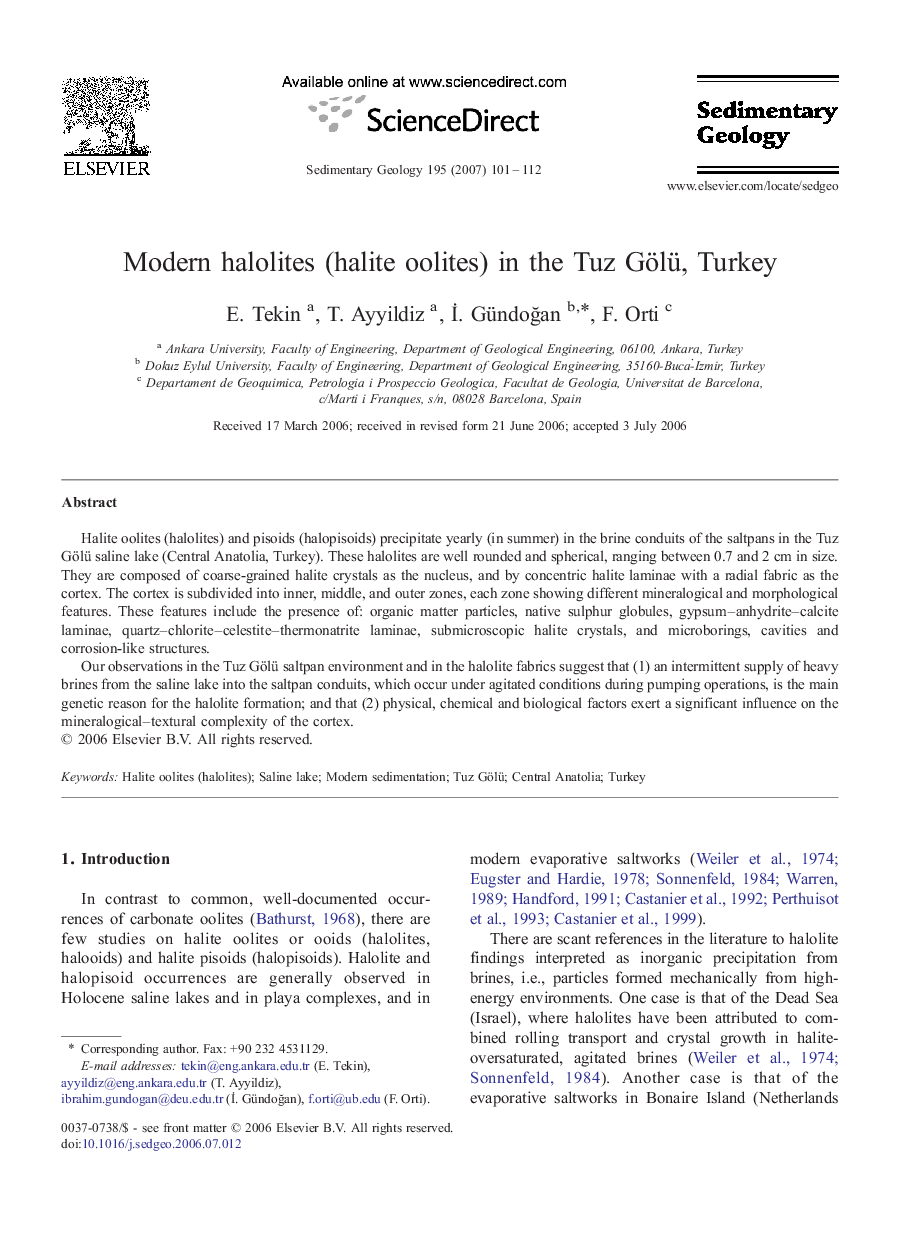| کد مقاله | کد نشریه | سال انتشار | مقاله انگلیسی | نسخه تمام متن |
|---|---|---|---|---|
| 4690950 | 1636174 | 2007 | 12 صفحه PDF | دانلود رایگان |

Halite oolites (halolites) and pisoids (halopisoids) precipitate yearly (in summer) in the brine conduits of the saltpans in the Tuz Gölü saline lake (Central Anatolia, Turkey). These halolites are well rounded and spherical, ranging between 0.7 and 2 cm in size. They are composed of coarse-grained halite crystals as the nucleus, and by concentric halite laminae with a radial fabric as the cortex. The cortex is subdivided into inner, middle, and outer zones, each zone showing different mineralogical and morphological features. These features include the presence of: organic matter particles, native sulphur globules, gypsum–anhydrite–calcite laminae, quartz–chlorite–celestite–thermonatrite laminae, submicroscopic halite crystals, and microborings, cavities and corrosion-like structures.Our observations in the Tuz Gölü saltpan environment and in the halolite fabrics suggest that (1) an intermittent supply of heavy brines from the saline lake into the saltpan conduits, which occur under agitated conditions during pumping operations, is the main genetic reason for the halolite formation; and that (2) physical, chemical and biological factors exert a significant influence on the mineralogical–textural complexity of the cortex.
Journal: Sedimentary Geology - Volume 195, Issues 3–4, 1 March 2007, Pages 101–112